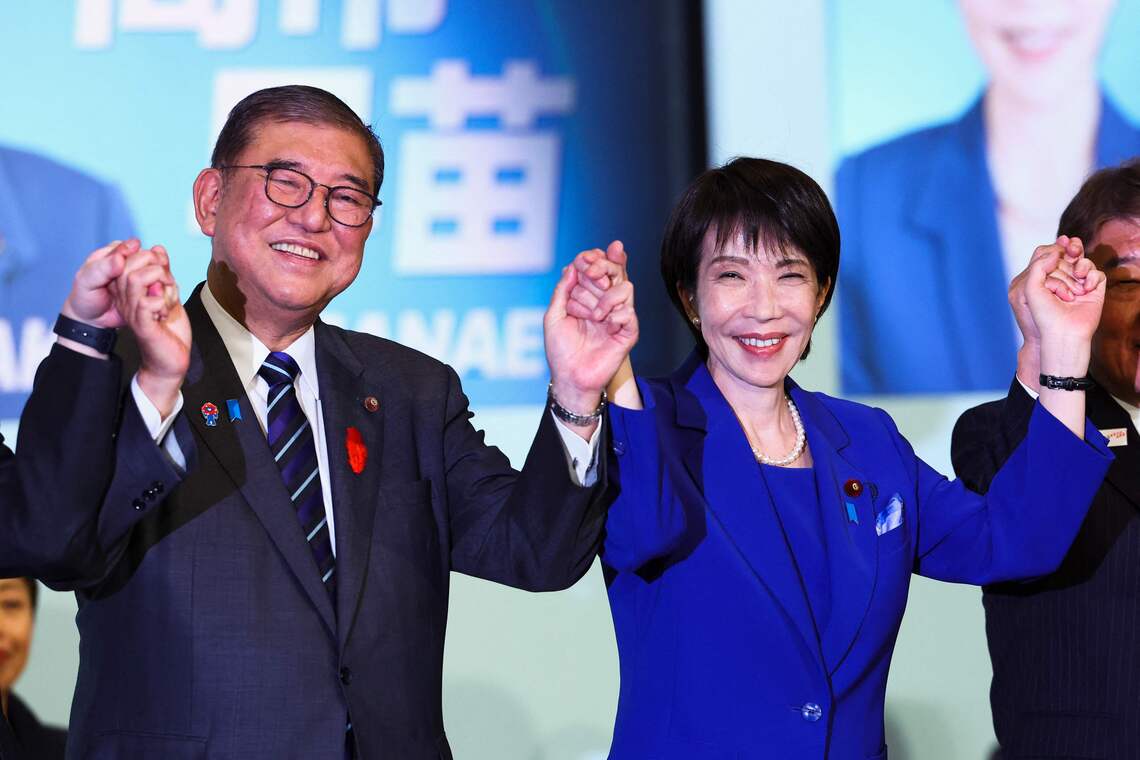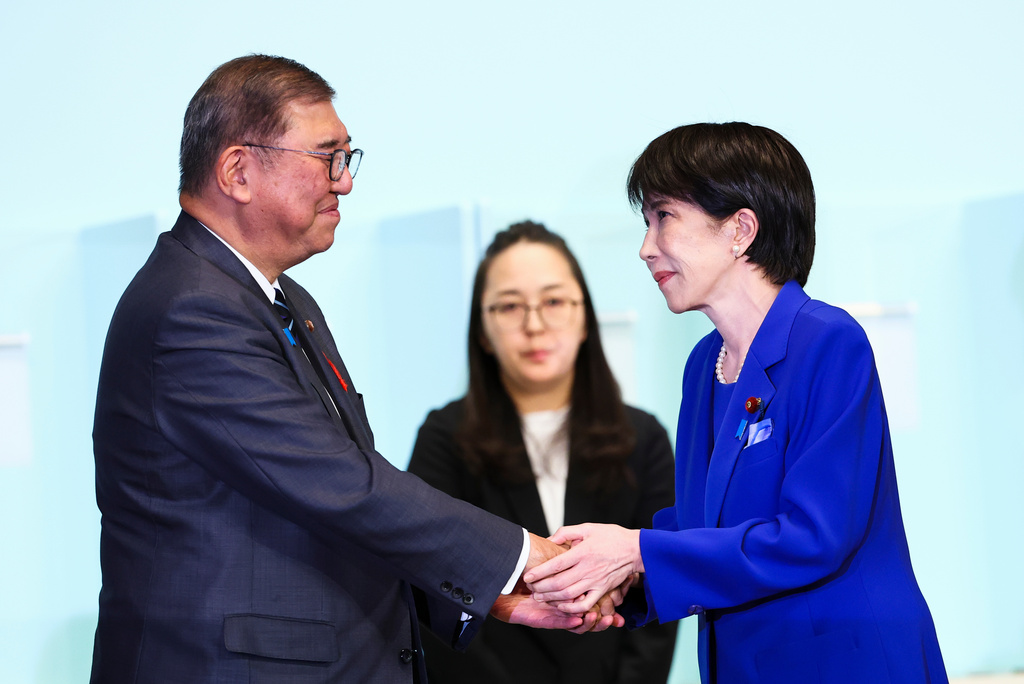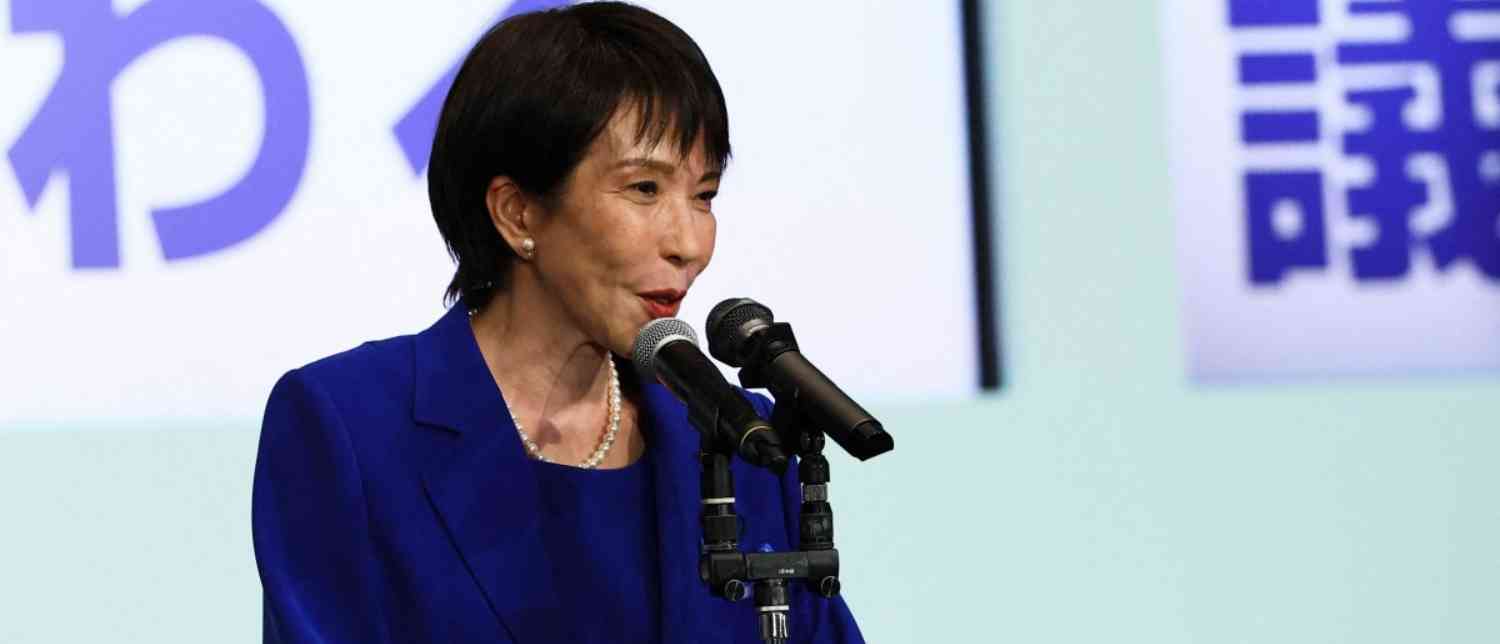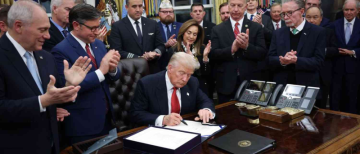Japan is on the brink of making history. For the first time in its postwar era, the country is set to welcome a female prime minister. The ruling Liberal Democratic Party (LDP) has elected Sanae Takaichi, a staunch conservative and nationalist, as its new party leader, putting her firmly on the path to succeed outgoing Prime Minister Shigeru Ishiba. At 64, Takaichi’s victory not only signals a significant political shift but also sets the stage for new domestic and international strategies that could redefine Japan’s future.

A Historic Victory for Sanae Takaichi
The decisive vote took place at LDP headquarters in Tokyo on Saturday, following Ishiba’s resignation after a turbulent year in office. In the runoff election, Takaichi defeated her moderate rival Shinjiro Koizumi, a 44-year-old reformist who had campaigned to become the youngest leader in modern Japanese history.
Takaichi, known for her right-wing stances and admiration of Britain’s Margaret Thatcher, pledged to lead Japan into a new era of strength and prosperity. “Recently, I have heard harsh voices from across the country saying we don’t know what the LDP stands for anymore,” she said moments before the final vote. “That sense of urgency drove me. I wanted to turn people’s anxieties about their daily lives and the future into hope.”
Her message resonated strongly with lawmakers and party members. According to Kyodo Times, she secured 183 out of 589 votes in the first round, with Koizumi trailing behind at 164. Three other candidates were eliminated after this stage. The second-round runoff, where MPs’ votes carried more weight than those of rank-and-file members, was expected to give Koizumi the edge. Yet Takaichi emerged as the surprise victor, consolidating her leadership position.
Context: LDP in Crisis
Takaichi inherits a party facing deep turmoil. Over the past year, the LDP has been battered by two punishing election defeats. A funding scandal and its perceived inability to address the rising cost of living pushed many voters toward opposition groups. The party also lost its majority in both houses of parliament during Ishiba’s tenure, a rare setback for the LDP, which has dominated Japanese politics for nearly all of the postwar period.
The erosion of trust has created fertile ground for challengers. The Democratic Party for the People, advocating expansionist policies, and the anti-immigration Sanseito party have been particularly successful in attracting disillusioned young voters. For the LDP, regaining credibility is an existential challenge—and one that Takaichi must confront immediately.
From Ishiba to Takaichi: A Change in Tone
Shigeru Ishiba, who held office for just a year, struggled to unite the party’s factions. His leadership, moderate in tone, angered LDP’s right-wing members, who longed for a more forceful conservative vision. His resignation paved the way for a leadership contest where Takaichi’s nationalist agenda gained traction.
With the LDP-led coalition still holding the largest number of parliamentary seats, Takaichi is widely expected to be approved as prime minister in a parliamentary vote scheduled for mid-October. To block her, opposition parties would need to rally behind a single candidate—a scenario observers call “unthinkable” given Japan’s fragmented opposition.

A Conservative Nationalist on the World Stage
Sanae Takaichi’s rise represents more than just a gender milestone—it introduces a leader with a sharply nationalist and interventionist outlook. A former minister of internal affairs and economic security, she advocates aggressive fiscal spending and a return to “Abenomics,” the economic framework pioneered by late Prime Minister Shinzo Abe.
Takaichi has openly criticized the Bank of Japan’s recent interest rate hikes, arguing they could strangle growth. Her stance has already influenced markets. Naoya Hasegawa, chief bond strategist at Okasan Securities, noted that her election weakened the likelihood of a BOJ rate increase this month, which traders had previously priced at a 60% chance. Investors, wary of Japan’s enormous public debt, are watching her moves closely.
On foreign policy, her views are even more striking. She has floated the idea of renegotiating a trade agreement with former U.S. President Donald Trump, which had reduced tariffs in exchange for Japanese taxpayer-backed investments. This could mark a significant departure from Ishiba’s more cautious economic diplomacy.
The U.S. ambassador to Japan, George Glass, quickly congratulated her via X, saying he looked forward to strengthening the bilateral partnership “on every front.”
Friction with Neighbours
Takaichi’s staunch nationalism could complicate Japan’s already delicate relations in East Asia. She is a regular visitor to the Yasukuni Shrine, where Japan’s war dead—including convicted war criminals—are commemorated. These visits are viewed by China and South Korea as glorifications of Japan’s militarist past.
Her positions also suggest a tougher line on regional security. She has called for revising Japan’s pacifist postwar constitution to allow for a more assertive military role. Earlier this year, she even suggested forming a “quasi-security alliance” with Taiwan, a democratically governed island claimed by China.
Taiwanese President Lai Ching-te welcomed her election warmly. “She is a steadfast friend of Taiwan,” he said, expressing hope that under Takaichi’s leadership, Japan and Taiwan would deepen cooperation in trade, security, and technology.
A Vision of “Japan is Back!”
For her supporters, Takaichi represents an opportunity to revitalize Japan’s global image and domestic confidence. She has promised to travel more frequently than her predecessor to promote the message that “Japan is back!” Her victory speech underscored her relentless work ethic: “I have thrown away my own work-life balance and I will work, work, work.”
Her role model, Margaret Thatcher, looms large over her leadership style. Like Thatcher, she promises bold reforms, strong defense policies, and a no-nonsense approach to governance. But just as Thatcher polarized Britain, Takaichi may polarize Japan between conservatives eager for a nationalistic revival and liberals anxious about democratic erosion.
The Road Ahead
Takaichi’s most immediate task is uniting a fractured LDP and regaining voter trust. She inherits a party damaged by scandal, internal divisions, and electoral setbacks. Restoring credibility will require both policy vision and political tact.
On the economic front, she must balance her expansionary fiscal agenda with the reality of Japan’s ballooning public debt. On the international stage, she must navigate a delicate balance: strengthening ties with allies like the U.S. and Taiwan while managing tensions with China and South Korea.
Domestically, her leadership will be tested by a public weary of rising living costs, political scandals, and stagnant wages. The question remains: can she turn frustration into faith and chart a new course for Japan?
Final Thoughts
Sanae Takaichi’s election as the first female leader of the Liberal Democratic Party is more than a political milestone—it is a moment of reckoning for Japan. Her blend of nationalism, fiscal activism, and unapologetic conservatism offers a dramatic break from the cautious leadership of Shigeru Ishiba.
With her expected confirmation as prime minister on October 15, she is poised to step into history as Japan’s first woman to hold the nation’s highest office. Whether she becomes a unifying force or a polarizing disruptor remains to be seen. But one thing is certain: under Sanae Takaichi, Japan is entering uncharted political waters.
With inputs from agencies
Image Source: Multiple agencies
© Copyright 2025. All Rights Reserved. Powered by Vygr Media.

























